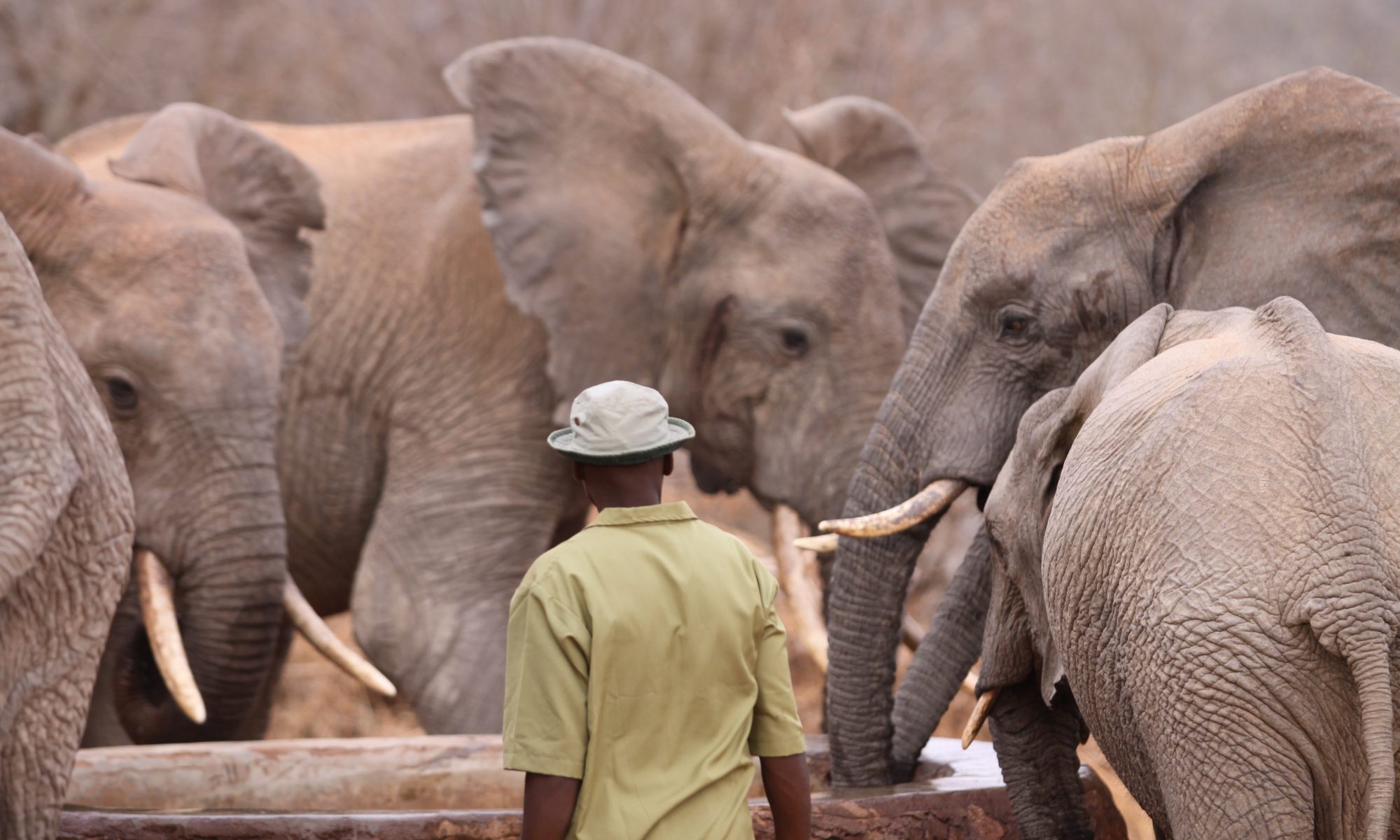Dozens of rhinos have been killed and their horns stolen by poachers targeting private sanctuaries. It is suspected they are working with rogue KWS rangers, writes JOB WERU
Three weeks ago, a contingent of Kenya Wildlife Service (KWS) and paramilitary General Service Unit officers were deployed to the expansive Solio Ranch to track down suspected poachers.
The poachers had sneaked into the sanctuary at night and shot dead a black rhino and escaped with one of its horns, before KWS officers caught up with them and killed one of them. The officers at the same time recovered an AK-47 rifle loaded with 30 bullets, two axes, a mobile phone and Sh39,651 from the felled poacher who was identified as Mohammed Ali Ibrahim from Tana River District.
Poaching history
A horn that had not been extracted from the 25-year-old rhino was also recovered.
A few months before, a suspected poacher was arrested with a G3 rifle in the ranch, which boasts the highest number of black rhinos, which international wildlife conservation agencies and conservationists have declared endangered. The attack came barely months after another poacher was arrested in the sanctuary while armed with a G3 rifle and was suspected to have been hunting for rhinos.
According to information posted on KWS website, 12 black rhinos (two per cent of Kenya’s black rhino population) and six white rhinos (one and-a-half per cent) of Kenya southern white rhinos were killed by poachers last year.
All the rhino poaching incidents were recorded in private ranches in Laikipia County where a total of 13 rhinos were poached. Mugie Ranch in Laikipia West District lost three, Laikipia Nature Conservancy three, Solio Ranch five while Ol Pejeta and Lewa Conservancy lost one each. But various stakeholders in the sector have raised a red alert over what they claim is KWS involvement in the illegal trade and its complacency in eradicating the vice.
Unconfirmed reports also indicate that some provincial administrators and some General Service Unit officers who have a camp in Solio Ranch may also be involved in the syndicate. KWS is the sole custodian of ivory and horns. One has to acquire a licence to hold any wildlife trophy.
Since 1989 when former President Daniel Arap Moi torched a bulk of elephant tusks, KWS has been accumulating tonnes of rhino and elephant tusks, all of which are kept in its “well-guarded’ strong rooms.
KWS Communications Manager Paul Udoto says when a tusk or horn is recovered from any region, they are temporarily kept in those regions before being transported to Nairobi under tight security. "We have not disposed of any horns, tusks or wildlife trophy since 1989. They are Government property and we cannot sell them since this would indirectly encourage poaching," says Udoto.
Strongrooms’ theft
Surprisingly, several rhino horns worth millions of shillings have mysteriously disappeared from various KWS strong rooms around the country in recent years. The thefts have been recorded in Meru National Park, Nanyuki’s KWS offices and KWS headquarters in Nairobi.
In Nanyuki, a Government pistol was also stolen.
In all the thefts, the strong rooms where the ivory was kept were reportedly opened, since no breakage was reported.
An officer, attached to the KWS headquarters and who sought anonymity, said nobody was charged in court over the Nanyuki incident where a rhino horn and a firearm were stolen.
In the Nanyuki’s case, an officer was arrested but later released after it was claimed he had given false information concerning the incident.
"No serious investigation is carried out despite the intensity of the crime and the magnitude of the value of the trophies. We squarely blame our senior officers over the incidents," said the officer.
The events surrounding incidents of rhino killings have, however, raised concerns over the seriousness of the agency in protecting the rhino. Udoto and the Mountain region Assistant Director at KWS Mr Robert Njue claim there was a scheme to malign KWS director, Dr Julius Kipngetich’s name ahead of the expected expiry of his term.
"We are heading to a transition and these appear like transition tricks that are taking course," Udoto says.
However, conservationists claim the organisation was somehow overwhelmed and was to blame over the deaths of rhinos. Concerning the theft in KWS strong rooms, Udoto, without giving specific details, claimed that some KWS officers were interdicted and others taken to court.
"These crimes occurred years ago and some officers who were implicated are no longer in service. We believe some machineries are reviving the issues to taint the image of our director," Udoto told CCI by phone.
In Kieni Constituency, which neighbours Solio Ranch, a resident who asked not to be named, claimed it was suspected that officers from KWS, GSU and some provincial administrators were involved.
Mr Edward Parfet, the proprietor of Solio Ranch called for an independent probe into the massive killing of rhinos in his conservancy, saying it appeared KWS was to blame. "KWS is solely to blame for the killings and something should be done about it," he told CCI by phone.
Parfet accused KWS of an underground scheme to kill rhinos in the sanctuary and sell rhino horns saying they are conversant with the terrain of the ranch. Solio Ranch has been marked as the best breeding ground for rhinos due to its ecological features that befit the beasts.
Also termed a good ground for rhino breeding is the nearby Ol’Pejeta conservancy. Njue trashed claims of KWS involvement as unfounded and out to malign the organisation and its exemplary performance in wildlife conservation and management. "The KWS rangers are professionally trained and they have their country at heart. These remarks are aimed at maligning the organisation and they are out to demoralise our officers who spend nights in the bush while in their noble duty of guarding Kenya’s heritage," he said.
Tough laws
For the last two years, poachers have increasingly attacked various sanctuaries within the country and the insurgence has left KWS and other conservationists worried.
Ms Kuki Gallmann, a leading conservationist, author and proprietor of Laikipia Nature Conservancy describes the attacks as a tragedy that deserves more attention in the media. She advocates for establishment of harsh laws against poaching.
"What is going on in the Kenyan bush is a tragedy of enormous proportion which should get more attention headlines in the media and in Parliament as our country is losing irreplaceable and priceless inheritance. It is a true holocaust," says Gallmann.
Last year, Gallmann’s ranch fell victim to the attacks. "We lost 62 elephants and three black rhinos. This escalated from 2007 when we lost six elephants and in 2008 when 28 elephants and one rhino were poached."
The conservationist attributes increased cases of poaching to increased prices of wildlife trophies and high demand.
Mr Njue, attributes the increased attacks in Kenya to the instability in the neighbouring Somalia. However, the trend is overwhelmingly worrying internationally, although African countries with huge herds of black rhinos seem easy targets.
"South Africa and Zimbabwe have similarly been affected by this rampant global rhino poaching. In 2009, the two nations lost more than 250 rhinos and the trend is escalating," says Njue.
The illegal trade is fuelled by Asian demand for rhinoceros horns and a temporary lift on wildlife trophy ban that was granted to some African countries. "Illegal dealers took the advantage to prey on rhinos and they have been using Kenyans, and especially the poor youth, to engage in the dangerous trade," says Njue.
"The instability in Somalia is escalating poaching in Kenya, since the country is being used as a conduit for trophies," he adds.
He says Somalia dealers are believed to be using Kenyans to kill black rhinos in conservancies.
"We have upped surveillance systems, and are able to detect anybody who trespasses into the sanctuary, prompting action from our rangers," says Njue.
Source:www.standardmedia.co.ke/InsidePage.php?id=2000025189&cid=259&story=KWS on the spot as poachers target private ranches

